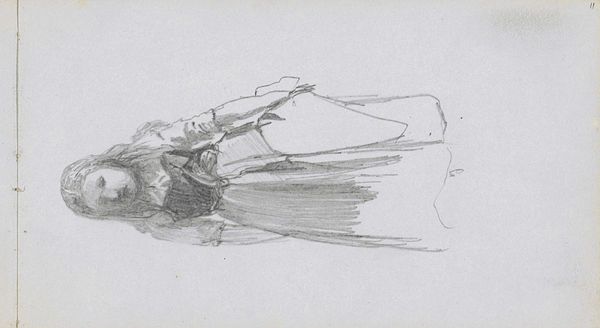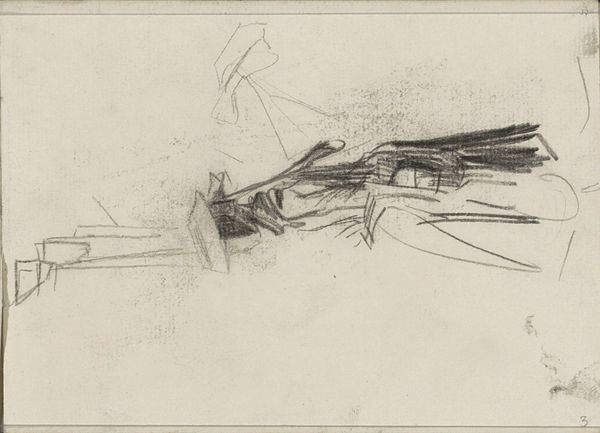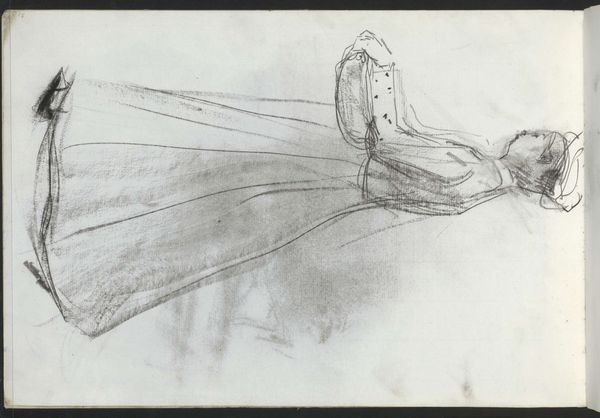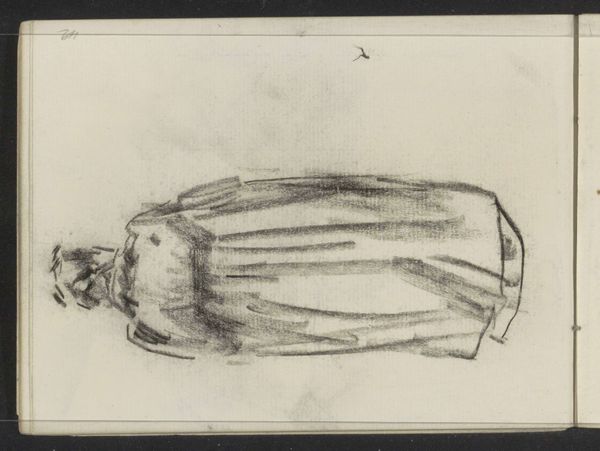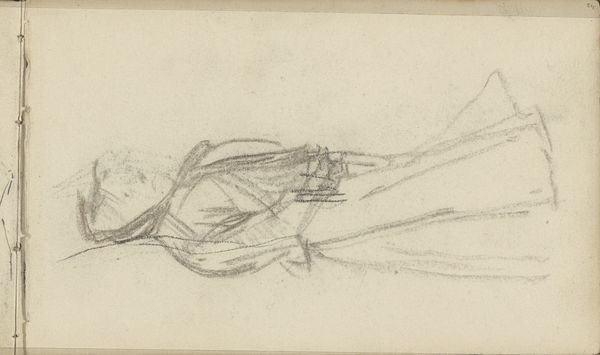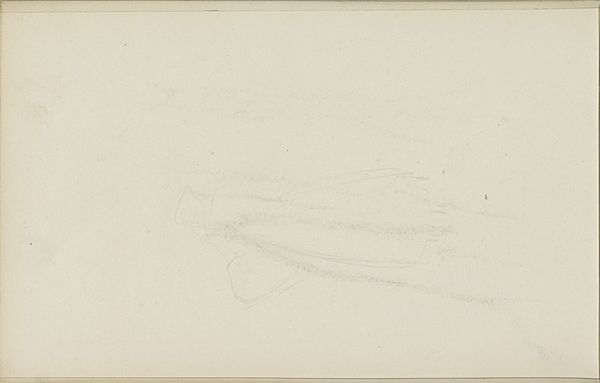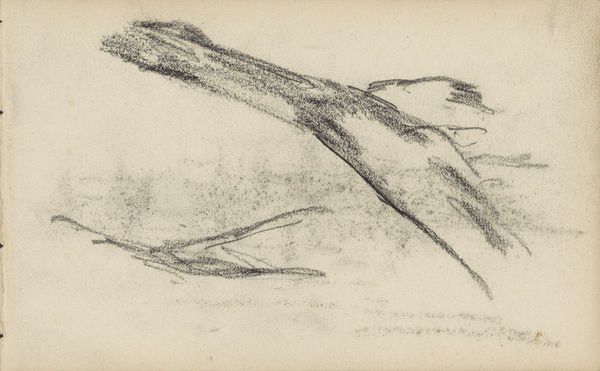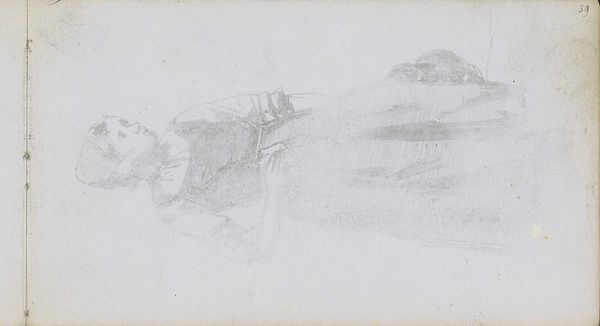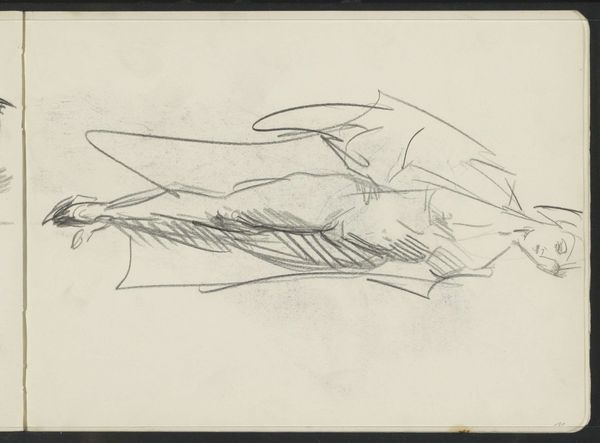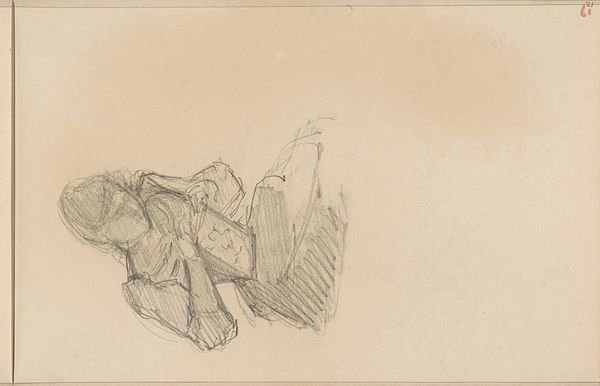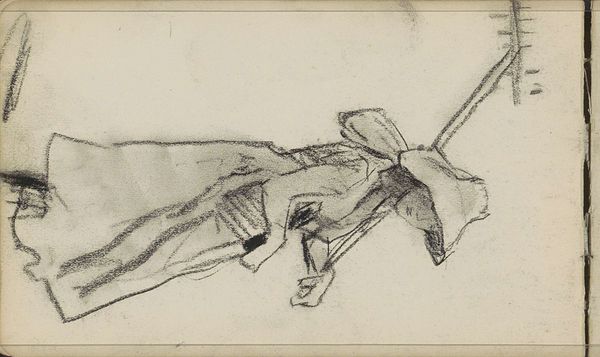
drawing, pencil
#
portrait
#
pencil drawn
#
drawing
#
pencil sketch
#
figuration
#
pencil drawing
#
pencil
#
pencil work
#
realism
Copyright: Rijks Museum: Open Domain
Editor: Here we have Johan Hendrik Weissenbruch’s "Abklatsch van de tekening op pagina 11 recto," created between 1834 and 1903. It's a delicate pencil drawing. I find the ephemeral nature of the lines quite striking; it feels like a fleeting glimpse. What compositional elements stand out to you? Curator: The composition certainly speaks to a prioritization of form over explicit narrative. Observe the deliberate placement of the figure within the frame. The diagonal orientation creates a dynamic tension, preventing the eye from resting. It is not merely a representation, but an essay in line and value. Editor: So, the diagonal placement isn't just a casual choice, but a deliberate act to create tension? Curator: Precisely. The artist’s employment of the pencil – consider the varying degrees of pressure. The subtle gradations in tone sculpt the form, generating a palpable sense of volume and depth, even in this seemingly simple sketch. Consider, too, the stark contrast between the heavily worked areas and the untouched paper. Editor: That contrast is really interesting. It's like the negative space is just as important as what's drawn. What do you make of the rapid execution, visible through the loose, gestural lines? Curator: Indeed, it signals a dedication to the essential qualities of the subject. It prompts us to consider the very nature of artistic representation. Editor: That makes me see it differently. It’s less about the person and more about the act of observing and translating that observation into form. Curator: Precisely. It challenges us to consider how even a preliminary sketch can reveal profound insights into the artist’s process. Editor: This has opened my eyes to appreciating the technical skill embedded in what I initially perceived as a simple drawing.
Comments
No comments
Be the first to comment and join the conversation on the ultimate creative platform.
